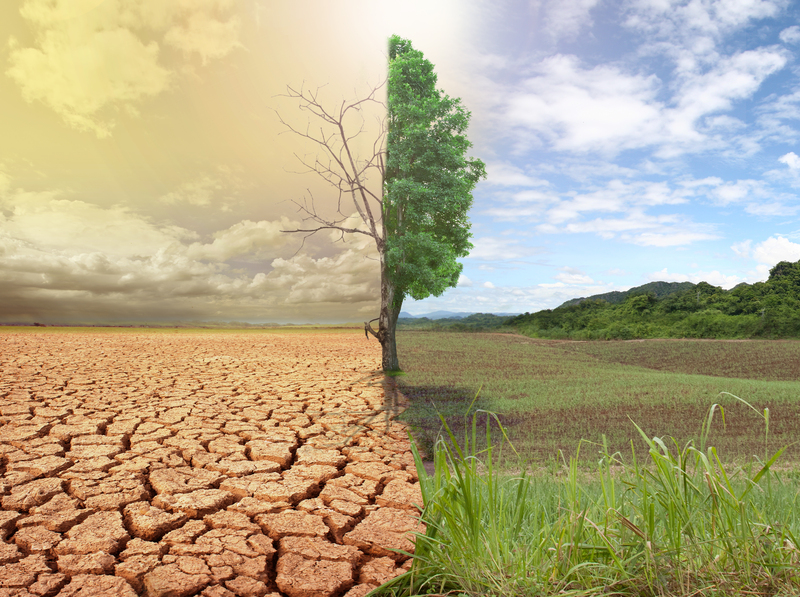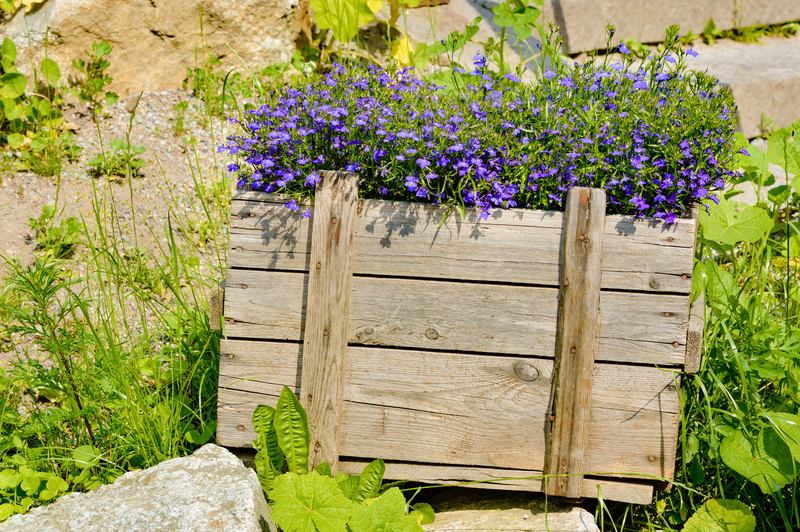Simplifying Recycling Concepts for Young Learners
Recycling is a crucial practice for sustaining our planet. Yet, when it comes to teaching the next generation, the challenge lies in simplifying recycling concepts for young learners so they can easily grasp and apply eco-friendly habits. This comprehensive article will guide educators and parents through fun, effective, and clear strategies for introducing the basics of recycling to children. By focusing on young students, we lay the foundation for a greener future.

Why Teaching Kids About Recycling Matters
Children are inherently curious and ready to learn about the world around them. Instilling recycling knowledge in young learners helps develop responsible habits that last a lifetime. Early education in environmental awareness brings about these benefits:
- Encourages respect for nature and resources
- Develops lifelong eco-friendly behaviors
- Reduces waste in schools and communities
- Empowers kids to influence friends and family
- Promotes problem-solving and critical thinking
Recycling education for children extends beyond sorting trash; it presents opportunities for creative learning about materials science, responsibility, and global citizenship.
Understanding the Basics: What is Recycling?
Before diving into activities and tips, it's essential to answer the main question children often ask: What is recycling?
Recycling is the process of turning waste materials into new items instead of throwing them away. It means taking something old--like a plastic bottle or newspaper--and giving it a new life. When you recycle, you help save energy, conserve natural resources, and reduce pollution.
The Simple 3Rs: Reduce, Reuse, Recycle
One of the best ways of simplifying recycling ideas for young learners is by introducing the 3Rs:
- Reduce: Use less and avoid waste. For example, eat all your food to avoid tossing leftovers, or borrow books from the library instead of buying new ones.
- Reuse: Find another use for items instead of throwing them out. Use both sides of a paper, or turn an old jar into a pencil holder.
- Recycle: Collect certain materials like paper, glass, plastic, and metal and send them to be made into new products.
Helping children understand and remember the 3Rs forms a strong basis for further recycling awareness for kids.
Making Recycling Fun and Engaging for Kids
Using Visual Aids and Hands-On Activities
Young brains thrive on real-world examples and real-life practice. Teachers and parents can demystify recycling for children by using colorful posters showing recyclable vs. non-recyclable materials. Key tips include:
- Display common recycling symbols and their meanings (plastic, paper, glass, etc.)
- Arrange a classroom or home recycling sorting station with clearly labeled bins
- Use toys or objects to practice sorting into the right containers
- Create crafts and art projects using recycled items
Visual and tactile activities help young learners recall lessons better, reinforcing the key message that recycling can be enjoyable.
Storytelling and Role Play
Children learn best with stories and imaginative play. Try these ideas:
- Read books with recycling heroes or environmental themes
- Invent stories where waste comes to life and wants to be recycled
- Organize a "recycling superhero" day, where kids dress up and act as recyclers saving the planet
- Use puppets to act out correct and incorrect ways to recycle
These methods make understanding recycling principles for young learners both educational and entertaining.
Interactive Quizzes and Games
Introduce online and offline quizzes that test children's knowledge of what can and can't be recycled. Ideas include:
- Memory matching games with pictures of recyclable and non-recyclable items
- Timed sorting races using safe household items
- Classroom recycling bingo
- 'Recycling scavenger hunt' to find objects around the room that can be recycled
Gamifying recycling learning not only strengthens their understanding but also builds teamwork and excitement.
Recycling Concepts Every Young Learner Should Know
The Recycling Journey: From Bin to New Product
Children are fascinated by process stories. Simplifying the recycling journey for young minds helps demystify what happens after we put objects in the recycling bin. Here's an easy way to explain:
- Collection: Recycling trucks pick up materials from homes, schools, or community bins.
- Sorting: Recyclables are sorted at special centers by type: paper, plastic, glass, or metal.
- Cleaning: Items are washed to remove food scraps and stickers.
- Processing: The clean materials are broken down or melted to make something new.
- Manufacturing: Factories use recycled materials to create new products, like playground equipment, clothing, or bottles.
Use simple diagrams or cartoons that map out this journey, underlining the transformation - from bottle to shirt, or newspaper to new paper!
The Importance of Sorting and Cleaning
Explain to children that not everything can be recycled, and sorting is important. Common points:
- Items must be free of food scraps to prevent contamination
- Some things, like greasy pizza boxes or broken glass, often can't be recycled in curbside bins
- Plastic bags usually need to be recycled at special collection points
Practical demonstrations, like rinsing out a yogurt container before putting it in the recycling, reinforce these key concepts for young recycling learners.
What Can and Can't be Recycled
Every area has its own rules, but here's a general guide that's easy for children to remember:
- Papers and newspapers - Yes, if clean and dry
- Plastic bottles and jugs - Yes, rinsed
- Metal cans - Yes, washed
- Glass bottles and jars - Yes, empty and clean
- Food waste - No, unless you have a compost bin
- Plastic bags - No, unless you take them to a store collection point
- Styrofoam and greasy cardboard - No
Use pictures, color coding, or simple checklists to help children remember and sort correctly.
Integrating Recycling Into Daily Routines
In the Classroom
- Assign rotating "recycling helper" roles for students
- Display recycling rules and reminders on classroom walls
- Encourage lunch waste audits to reduce and recycle more
- Organize class projects upcycling old materials
At Home
- Place labeled bins in the kitchen and encourage sorting after meals
- Create a family recycling chart and set weekly goals as a team
- Let kids decorate bins to make recycling "their responsibility"
When recycling is woven into daily habits, it becomes second nature and sticks with children as they grow older.
Overcoming Challenges in Teaching Recycling Concepts
Sometimes, simplifying recycling concepts for young learners isn't always easy. Common challenges and practical solutions include:
- Confusion about what can be recycled: Use visual guides, keep a simple list above recycling bins, and update it as rules change.
- Lack of interest or motivation: Turn lessons into games, competitions, or group projects that boost excitement.
- Inconsistent rules between home and school: Keep open communication with parents and use unified language and signage where possible.
- Limited understanding of environmental impact: Use age-appropriate documentaries, pictures, and comparisons (e.g., saving enough energy to power a light bulb) to make the impact visible and relatable.
By addressing these challenges with creativity, adults can make recycling education more accessible and meaningful for children.
Helpful Resources for Simplifying Recycling for Children
For anyone wishing to explore recycling concepts in greater detail, many resources offer age-appropriate activities and materials:
- Interactive recycling websites for kids, such as National Geographic Kids or Earth Rangers
- Printable coloring sheets showing recyclable vs. non-recyclable items
- Short, animated videos on the recycling process (YouTube and educational platforms)
- Local authority recycling guidelines (many have printable posters for kids)
- Apps and games that test recycling knowledge in a fun way
Pair these tools with regular, hands-on activities for the best results in teaching recycling to young learners.

Environmental Stewardship: Empowering Our Youngest Recyclers
When we invest the time and creativity to simplify recycling concepts for young learners, we inspire the next generation to care for our planet. Small steps--teaching sorting, turning recycling into games, and keeping messaging positive and clear--make a huge difference. Whether in the classroom or at home, children who understand the value of recycling become enthusiastic advocates for a cleaner Earth.
Let every child discover that they have the power to make a difference, one recyclable item at a time. As we nurture environmental responsibility in young minds, we're not just teaching recycling--we're teaching love and care for the world we all share.
Conclusion: Planting the Seeds of Sustainability
Simplifying recycling ideas for young learners is a rewarding journey that benefits everyone. By breaking down concepts, making learning interactive, and fostering lifelong habits, we grow eco-friendly citizens. Remember, even the smallest lesson today can spark a lifelong passion for protecting the planet tomorrow. Let's start now--one bottle, one paper, one small recycler at a time!